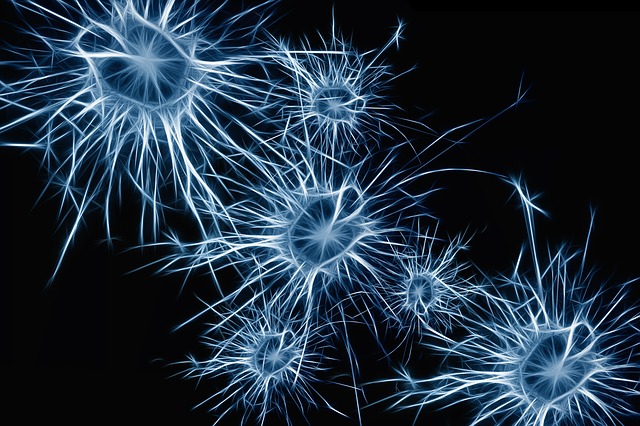If you are an avid learner there is a chance you probably have heard of the famous course Learning How to Learn: Powerful mental tools to help you master tough subjects from Coursera, taught by PhD Barbara Okley and PhD Terrence Sejnowski. I already took this course once and it’s second part Mindshift: Break Through Obstacles to learning and discover your hidden potential and I can say -as many others- that they are totally worthy. They are worthy because in the tech industry, we need to be studying all the time to keep up with technology and it is better to know the proper tools to hack your brain and study techniques for becoming more efficient learners and productive developers.
Even now I am thinking of retaking the course to keep practicing the techniques and concepts given in it for allowing me to help grow my career as a software developer. With that in mind, I decided to write about the course for those who haven’t taken it to have an idea of what to expect and also as a summary for myself.
The course is divided in 4 weeks, each one with quizzes, complementary videos, interviews to renowned persons and assignments. For the sake of following an order, I’ll keep this order as well within this post and the second part.
1. What is learning?
In this section of the course, we learn about the two modes in which the brain operates when learning a new subject. Professor Oakley calls these two modes of thinking focused mode and diffuse mode.
As the name explains, in the focused mode your brain concentrates on an idea. This mode is the best for working or studying familiar problems that require a lot of your time.
The diffused mode is good for letting your mind relax and wander any idea that comes to you. It is good for helping your brain work on unfamiliar problems or learning new concepts.
Switching from one mode to the other will help you learn and work into new ideas more easily. It is a process that takes time and that’s why you need to allow your brain time to master a new concept or idea.
How our brain behaves when learning

It is usual to be proud when one becomes very skillful playing chess or doing heavy big calculations without using calculators. Even though it is impressive, it takes years of learning and practice. Something that modern computers are able to learn and do with more efficiency in less time. There are more complex activities that computers are not yet capable of doing, such as running, walking or playing a sport.
Every time we take a nap or sleep our neurons create new connections with each other, enhancing our memory with the newly learned concepts. This constant change will make you realize that even though our brains are mature they are constantly changing and making new connections. Put it this way, It is like every time we wake up after a nap or a night of sleep, we come with a new upgraded brain.
One thing that makes us avoid learning new things is procrastination. Researchers have found that every time we want to do something that bothers us, the brain activates the same regions than pain and after a while, of doing this activity the uneasy sensation disappears. The thing with procrastination is that we end up doing something that brings us happiness momentarily, avoiding the activity that makes us worry at the beginning.
One useful technique to avoid procrastination is the Pomodore technique, which consists of 25 minutes of intense mental work followed by 5 minutes of mental relaxation. It is important to give yourself a reward in this 5 minutes frame, where it can be web surfing, drinking coffee, stretching or chit-chatting while letting your brain enter in a more relaxed mode (diffused mode 😉 )
Practice makes permanent
When a concept seems to be more abstract and difficult to understand, one useful way to master it is to practice. Practice will allow your neural connections to become stronger during your learning process.
Neurons become linked together through repeated use. The more abstract something is, the more important it is to practice in order to bring those ideas into reality for you.
Dr Barbara Oakely
Remember to take a break after intense study or practice, while in diffuse mode, your brain will work away in the background and help you with conceptual understanding.
One good tip here is interleaving. That is providing intelligent variety in your studies. Mix up the problems from different chapters. It can make your learning a little bit more challenging, but it helps you learn more deeply.
Working Memory and Long Term Memory

There are 2 kinds of memories which the course will focus on.
Working memory is the part of your memory related to what you are immediately and consciously processing in your mind. It is also connected to your long term memory and can only hold 4 chunks of information. For making a new concept stay in this memory you will need repetition, like when you try to memorize a phone number. Short term memory is like an inefficient mental blackboard.
Long term memory, on the other hand, is like a huge storage warehouse. To put something in the long term memory you need to revisit it a few times to increase the chances to be able to find it whenever you will need it later. This type of memory is so immense that it has room for billions of items. There are so many that they can bury each other. This memory is important because it is where you store fundamental concepts and techniques related to whatever you are learning.
Spaced repetition is the technique that will allow you to move information from your working memory to your long term memory. It consists of repeating what you are trying to learn, but instead of doing it intensely you need to space out your repetition. Rather than repeating something 30 times in a session of study, practice it the same amount of times in several days to give your synaptic connections time to form and strengthen.
The importance of sleep
Sleep is an important part of the learning process because it can help you:
- Keep you healthy by cleaning metabolic toxins
- Allow the brain to strengthen neural patterns, helping you with the tougher concepts of your learning
Lack of sleep can be associated with nasty conditions like headaches, depression, heart disease, diabetes…basically dying earlier.
2. Chunking

According to the course, a chunk is:
Compact packages of information that your mind can easily access.
Dr Barbara Oakley
And the act of chunking is:
The mental leap that helps you unite bits of information through meaning.
Dr Barbara Oakley
The chunk takes place in the prefrontal cortex of your brain by every time your attention focuses on new learning. You can imagine this mode ( your prefrontal cortex working) as an octopus that is picking information of a group of neurons to fill each of the 4 slots of memory that we talked about earlier in the working memory section.
This attention mode can be improved if you learn like a baby learning a new language. For example, when a Japanese baby learns the word mom (okaasan), he can associate that new knowledge with:
- The sound of the word okaasan coming from his mother mouth
- Answering to her call
- Remembering the smile of his mother as she carries her baby in her arms.
Eventually this new logic became so natural to the baby as breathing. That’s because a lot of neurons are fired and wired together to cement the relationship between the sound mama (okaasan) and her smiling face.
The concept of neural chunks also applies to fields like sports, music, dance or any activity where humans can get good at.
Focused practice, repetition and the creation of strong memory traces helps you to create chunks.
Dr Barbara Oakley
Please be aware that your prefrontal cortex doesn’t seem to work well when you are angry, stressed or afraid.
How to form a chunk
Let’s put this into context and let’s say you are going to learn the basics of playing tennis. In the beginning, you need to learn the patterns separately in order to play a proper single game or match completely. For that purpose, you need to practice a lot about how to:
- Hold the racket
- The forehand movement
- The backhand movement
- Serve
- Move inside the court. Footwork
- Hand-eye coordination
Each one is not enough to play tennis but if you mixed them together you will have a very complex and well-grained chunk. Best chunks are the ones that you don’t have to think about the patterns consciously and individually. The information comes to you naturally. Like in the Japanese baby example.
In math and science, every time you are learning a new topic, you usually start studying with worked-out problems. This is because for the first time of solving a problem you will have a very cognitive load. This technique helps you understand why the steps for solving it work that way. See the key aspects of the solution. In the context of tennis, watching a tennis match will help you see a more advanced player’s game and understand every pattern and their purpose in the game.
Steps to make a chunk

- Avoid distractions to help you make new neural patterns and connecting them with pre-existing patterns. You want the 4 slots of your memory to focus only on what you are learning.
Shift from focused thinking to diffuse thinking to allow your brain to figure out what is going on in particular new learning material. - Understanding. Making relations and seeing the big picture of whatever you are learning.
Gain context. Learn not just how to use the chunk but when to use it (or not). For example, when starting a new chapter of a book, take 2 minutes to read all of it first to grasp some context of the information you will learn.
Don’t confuse the aha! moment of understanding with solid expertise - Practice and repetition. In math and science related topics, just close the book and try to solve a problem with what you understand. Solve the problem yourself.
Bottom up learning (chunking) and top-down learning (big picture) will help you master any material.
Illusions of competence in learning
- Reread. According to psychologist Jeffrey Karpicke in his paper “Retrieval Practice Produces More Learning than Elaborative Studying with Concept Mapping”, recalling (mental retrieval of key ideas) what you just learnt is a better approach to studying new material than rereading it. After studying, look away and see what you can remember from the material you just read.
Rereading makes sense only when you let the time pass between studies. Kind of spaced repetition. - Seeing/reading the solution to a problem. Believing that you understand the solution is not actually the same as building the memory pattern in your brain. Solve the problem yourself.
- Highlighting and underlining without too much analysis. Some people think that the more they highlight sentences or paragraphs will make them memorize new concepts. As is the hand motion the trick to help you memorize. Instead, try to grasp the main ideas and highlight the minimum as possible. Notes or words in a margin, on the other hand, are very useful for synthesizing key ideas.
- Spending too much time with the material or having the books near you creates the illusion of having the material already in your brain. Test yourself on whatever you are learning. In some sense this is what recall does. Test whether or not you already have the main idea. Mistakes are good because they allow you to learn better and help you master whatever you are learning before the real test.
Another tip about recalling is that you should try to do it in different scenarios from the room you were learning it. That is because when someone is studying, without realizing it, the subconscious takes cues from the room or space where you are learning. This can throw you off when you take the real test because tests are usually held in a different room.
By recalling and thinking about the material when you are in various physical environments, you become independent of the cues from any one given location.
Dr Barbara Oakley
I will continue this article with a second part where we will analyze more content about procrastination and unlocking your potential.
Sources
